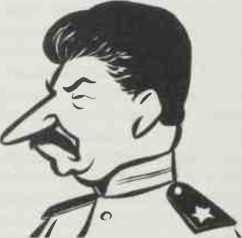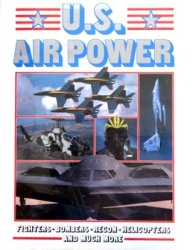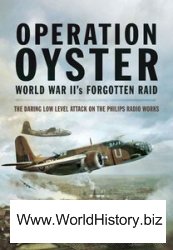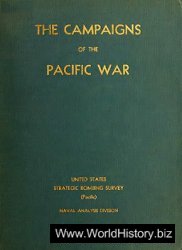1960s, this was an unsuccessful non-storable fuelled competitor to SS-9 and was never deployed.
SS-11 Sego. Originally designed as a long-range anti-ship missile, the SS-11 became the first mass-production Soviet silo-based light iCBM. A storable liquid-fuelled weapon with a warhead of about 1 megaton and cep of 4,592ft (1,400m), 1,030 were deployed from 1966, some alongside SS-4 as an IRBM to cover theatre targets in Europe. Two improved variants, one with greater accuracy (cep 3,608ft/l,100m) and one with three MRVS appeared in 1973-75, and most of the 440 that remain are of these later versions.
SS-12 Scapegoat. A two-stage SRiNF missile with a range of 480540 miles (800-900km) carried on a mobile launcher; entered service in the late 1960s. It is being withdrawn under the inf Treaty.
SS-13 Savage. The Soviet Union’s first solid-fuelled icbm. A three-stage missile, it was not a successful design with a cep of about 5,904ft (1,800m) . It only entered service in limited numbers, 60 silos being deployed at Yoshkar Ola beginning in 1967.
SS-14 Scapegoat. An mrbm, based on the top two stages of SS-13 and carried in a tracked vehicle, the whole system being known as “Scamp”. It was displayed in Moscow in the mid 1960s; briefly deployed in very limited quantities along the Chinese border.
SS-15 Scrooge. An experimental mobile irbm displayed in Red Square in 1965. It was a member of the troubled SS-13 family, probably using the bottom two stages. Like SS-14 it may have seen very limited operational service along the Chinese border.
SS-16. This was a developed SS-13 for mobile deployment, first flight tested in 1972 but never deployed as a result of salt-2.
SS-17 Spanker. A cold-launched, silo-based, storable liquid-fuelled, medium icbm, developed by the same design bureau as the SS-9/18 heavy missiles. It was first deployed in 1972, carries four 500 kiloton MIRVS and has almost three times the throw-weight of the SS-11. Its CEP is 1,312ft (400m) and 150 are deployed.
SS-18 Satan. The current heavy counter-force missile. A throw-weight of over 15,9501b (7,250kg) allows the storable liquid-fuelled missile to deliver ten half megaton MIRVS with a CEP of 820ft (250m) . First in service in 1974 in singlewarhead version (24 megatons) the first MiRved variant followed in 1976; 308 are deployed deep inside the southern USSR.
SS-19 Stiletto. The follow-on to the SS-11, capable of delivering six 550 kiloton mirvs with a cep of 984ft (300m) . It was first deployed in 1975. Some of the 360 in service are allocated to theatre targets. It is storable liquid-fuelled and hot-launched from its silo.
SS-20 Saber. The first descendent of the solid-fuelled SS-13 to be mass deployed. A mobile two-stage irbm with three 150 kiloton mirvs, it was used from 1977 to modernize and enlarge the USSR’s long-range theatre striking forces. Its deployment led directly to the inf Treaty which provides for the destruction of all 441 deployed systems.
SS-21 Scarab. A 72-mile (120km) range battlefield srbm which began to replace unguided frog rockets in the late 1970s. Reported cep varies from 164 to 984ft (50 to 300m) and nuclear (100 kiloton) and high-explosive submunition warheads are available. SS-21 is carried on a wheeled launcher.
SS-22. Used for a time for late model SS-12 srinf missiles, sometimes known as SS-12M.
SS-23 Spider. A 300-mile (500km) range, more accurate (cep 820-948ft/250-300m) follow-on srbm to Scud, that has been sacrificed by the Soviets under the inf Treaty.
SS-24 Scalpel. A solid-fuelled medium icbm with a throw-weight greater than SS-19, deployed on railway-mounted mobile launchers. It carries 8-10 100 kiloton MIRVS with a CEP of 656ft (200m).
SS-25 Sickle. The latest icbm development of the SS-13 currently being deployed on mobile wheeled launchers. A single-warhead weapon of high accuracy (cep 656ft/200m) its status as a “new” missile is a matter of some dispute between the USA and the USSR.
Stalin, Marshal Josef (1879
1953). Russian. Born in Georgia in southern Russia, Stalin was educated at a seminary before being expelled for revolutionary activities. This did not deter him from these pursuits and in 1902 he was

Caricaturist’s view of the “man of steel”
Arrested on the first of numerous occasions and exiled to Siberia. In the years before World War I, Stalin’s reputation steadily rose in the Bolshevik party. He was active at Russian' and international conferences, was a prominent revolutionary journalist and became the party’s spokesman on Nationalism and Marxism. Released from internal exile by the February 1917 revolution, he returned to Petrog-rad where he became temporary editor of Pravda and earned Lenin’s ire by advocating support of the Provisional Government. During the Civil War he took part in the defence of Petrograd and Tsaritsyn, the latter being renamed Stalingrad in recognition of his efforts. Appointed Commissar for Nationalities, in 1922 he became Secretary General of the Communist Party and, with Lenin’s health rapidly deteriorating, he entered the fray for the succession. In the struggle for political supremacy, Stalin formed an alliance to oust Trotsky and, once this had been achieved, turned on his erstwhile allies. He dominated the Party Congress of 1927 and thereafter increasingly exerted his control over all aspects of Soviet affairs. Stalin was ruthless in eliminating rivals from the ranks of the Party and the Red Army and throughout the 1930s millions of real and supposed enemies were tried, imprisoned and executed. He brought the same attitude to his diplomatic dealings and stunned the world in May 1939 by concluding a pact with Nazi Germany. This was followed by a period of territorial aggrandisement with part of Poland, the Baltic States and Finland coming under Soviet sway.




 World History
World History









